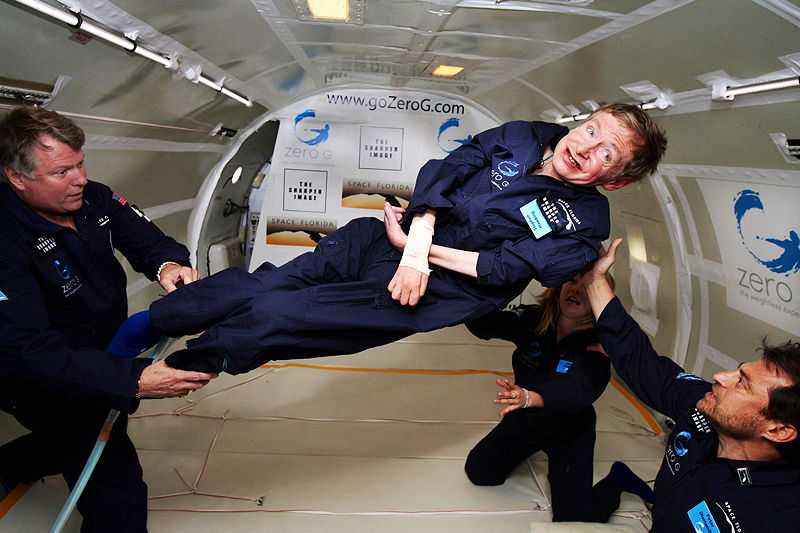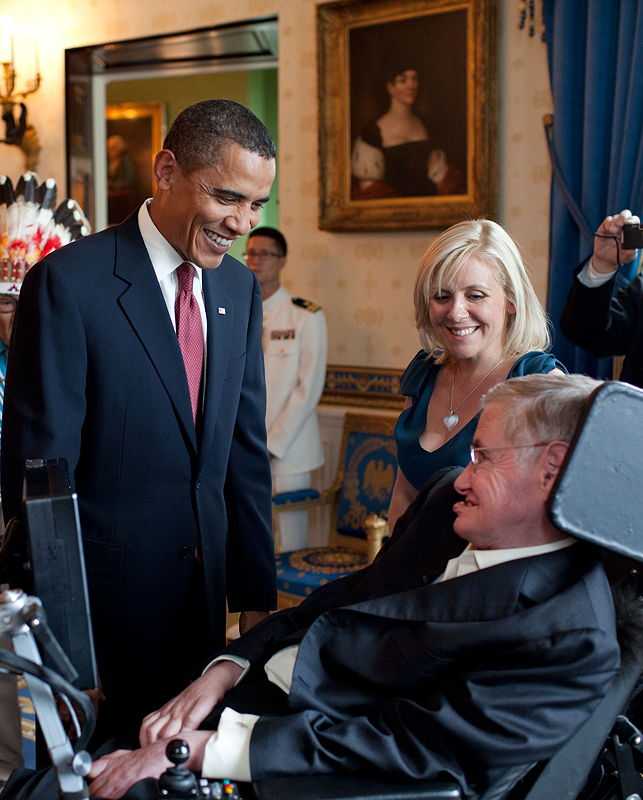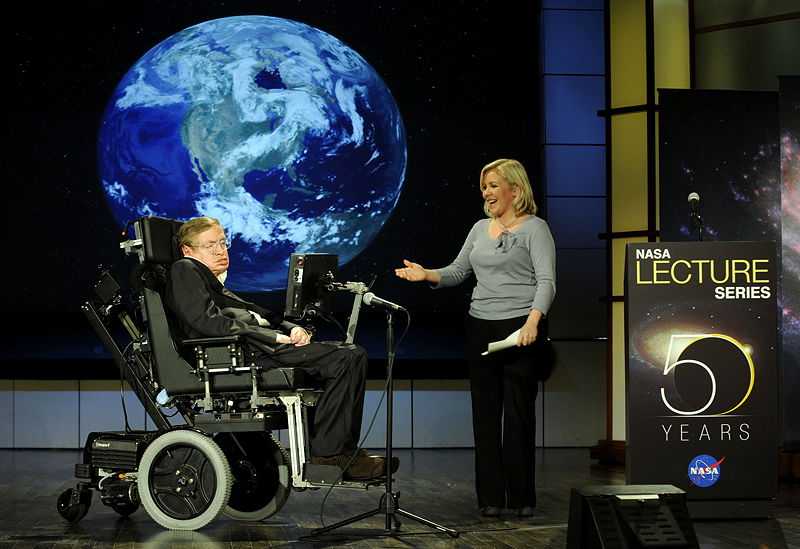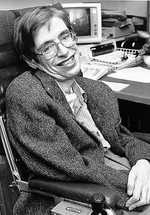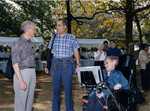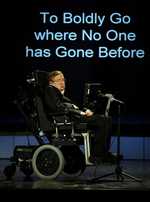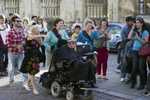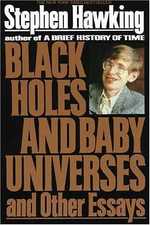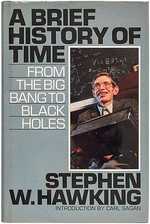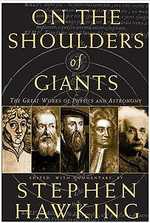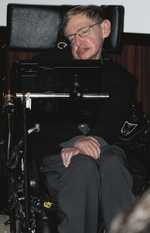1. Hawking's early life
Stephen Hawking was born on 8 January 1942, in Oxfordshire, England, where his mother had been sent for safety during the German bombings of London during World War II.
His birthday was also the 300th anniversary of the death of Galileo — long a source of pride for the celebrated physicist.
His mother Isobel Hawking was an Oxford graduate and his father Frank Hawking was a medical researcher. Hawking was the eldest of their four children.
After Hawking's birth, the family reunited in London, where his father headed the division of parasitology at the National Institute for Medical Research. The family then moved to St Albans so that Frank Hawking could pursue medical research at the nearby Institute for Medical Research in Mill Hill.
The Hawkings family were said to be an “eccentric” bunch, as one close family friend described them. Dinner was often eaten in silence, each of the Hawkings intently reading a book. The family car was an old London taxi, and their home in St Albans was a three-storey fixer-upper that never quite got fixed. Hawking’s father wanted his eldest child to go into medicine, but at an early age, Hawking showed a passion for science and the sky.
Hawking attended school in St Albans, where he was an unexceptional student. His brilliance was much more apparent in his years at Oxford University, where he specialised in physics and graduated with first-class honours. In 1962, he continued his education at Cambridge University, pursuing a PhD in cosmology.
2. ALS Diagnosis
At age 21, a year after beginning his PhD, Stephen Hawking was diagnosed with ALS, and was given only three years to live.
Not long after he was released from the hospital following his diagnosis, Hawking had a dream that he was going to be executed. He said this dream made him realise that there were still things to do with his life.
Just before his diagnosis, Hawking met Jane Wilde, and the two were married in 1965. The couple gave birth to a son, Robert, in 1967, and a daughter, Lucy, in 1970. A third child, Timothy, arrived in 1979.
Hawking's disease helped turn him into the noted scientist he became. Before the diagnosis, Hawking hadn't always focused on his studies as he admitted:
"Before my condition was diagnosed, I had been very bored with life. There had not seemed to be anything worth doing."
With the realisation that he might not even live long enough to earn his PhD, Hawking poured himself into his work and research.
As Hawking’s disease progressed, he became less mobile and began using a wheelchair. Hawking eventually lost his ability to speak, so he utilised a device capable of translating his cheek movements to speak in a digitised voice. While Hawking was a celebrated physicist, he became well respected for his ability to accomplish so much while suffering the debilitating affects caused by ALS.
3. Scientific Triumphs
In 1974, Hawking's research turned him into a celebrity within the scientific world when he showed that black holes aren't the information vacuums that scientists had thought they were.
Hawking demonstrated that matter, in the form of radiation, can escape the gravitational force of a collapsed star. Working with fellow cosmologist Roger Penrose, he demonstrated that Albert Einstein's Theory of General Relativity suggests that space and time began at the birth of the universe and ends within black holes, which implies that Einstein's theory and quantum theory must be united.
Black holes
Using the two theories together, Hawking also determined that black holes are not totally dark but instead emit radiation. He predicted that, following the Big Bang, black holes as tiny as protons were created, governed by both general relativity and quantum mechanics.
That same year, Hawking was inducted into the Royal Society, a worldwide fellowship of scientists. In 1979, he was appointed Lucasian Professor of Mathematics at Cambridge, the most famous academic chair in the world (the second holder was Sir Isaac Newton, also a member of the Royal Society), among other honours. He also earned teaching stints at Caltech in California, where he served as visiting professor, and at Gonville and Caius College in Cambridge.
In 2014, Hawking revised his earlier theory, even writing that "there are no black holes" — at least, in the way that cosmologists traditionally understand them. His theory removed the existence of an "event horizon", the point where nothing can escape. Instead, he proposed that there would be an "apparent horizon" that would alter according to quantum changes within the black hole.
Space travel
In 2007, at the age of 65, Hawking made an important step toward space travel. While visiting the Kennedy Space Center in Florida, he was given the opportunity to experience an environment without gravity.
Over the course of two hours over the Atlantic, Hawking, a passenger on a modified Boeing 727, was freed from his wheelchair to experience bursts of weightlessness. He recalled: "The zero-G part was wonderful, and the high-G part was no problem. I could have gone on and on. Space, here I come!"
In a 2007 statement, Hawking declared:
"Life on Earth is at the ever-increasing risk of being wiped out by a disaster, such as sudden global warming, nuclear war, a genetically engineered virus or other dangers. I think the human race has no future if it doesn't go into space. I therefore want to encourage public interest in space."
Hawking was scheduled to fly to the edge of space as one of Sir Richard Branson's pioneer space tourists.
Hawking's books
Over the years, Hawking wrote and co-wrote a total of 15 books. They included the 1988 best seller 'A Brief History of Time' which offered a simple explanation of cosmology, and offered an overview of space and time, the existence of God and the future.
Hawking went on to write other non-fiction books aimed at non-scientists. These include ‘A Briefer History of Time’, ‘The Universe in a Nutshell’, ‘The Grand Design’, and ‘On the Shoulders of Giants’.
He and his daughter, Lucy Hawking, also created a fictional series of books for school children on the creation of the universe, including ‘George and the Big Bang’.
Celebrity scientist
Over the years, Hawking became somewhat of a celebrity scientist and made several guest appearances on TV shoes including playing a hologram of himself on Star Trek: The Next Generation and a cameo on the comedy hit Big Bang Theory. He also made appearances on the The Simpsons and Futurama.
In 2014, a movie based on Hawking's life starring British actor Eddie Redmayne was released. 'The Theory of Everything' charted the story of Hawking’s early life and school days, his courtship and marriage to Wilde, as well as the progression of his crippling disease and his scientific triumphs.
The film drew praise from Hawking who admitted the film made him reflect on his own life. In a Facebook post he said:
"Although I'm severely disabled, I have been successful in my scientific work,"
Stephen Hawking died in his home in Cambridge, England on 14 March 2018. He was 76. His ashes were placed in London’s Westminster Abbey between the final resting places of Sir Isaac Newton and Charles Darwin.
4. Hawking's legacy
Stephen Hawking made huge contributions as a scientist and science communicator. His theories and research leave questions for the next generation of scientists.
The Stephen Hawking Medal for Science Communication, an award created for individuals who promote public awareness of science, is one of many that honours the legendary scientist.
Earlier this year, The Royal Mint released a new 50p coin in honour of Hawking’s life and work. The coin’s eye-catching design features Hawking’s name and his mathematical formula for black hole thermodynamics seemingly caught in a black hole vortex. The rare coin is one of several released by The Royal Mint to commemorate top scientists.
Aside from his scientific work, Hawking was an inspiration to many for his courage and strength in overcoming obstacles.
Hawking quotes
"Life would be tragic if it weren't funny."
"People won't have time for you if you are always angry or complaining."
"We are just an advanced breed of monkeys on a minor planet of a very average star. But we can understand the Universe. That makes us something very special."
